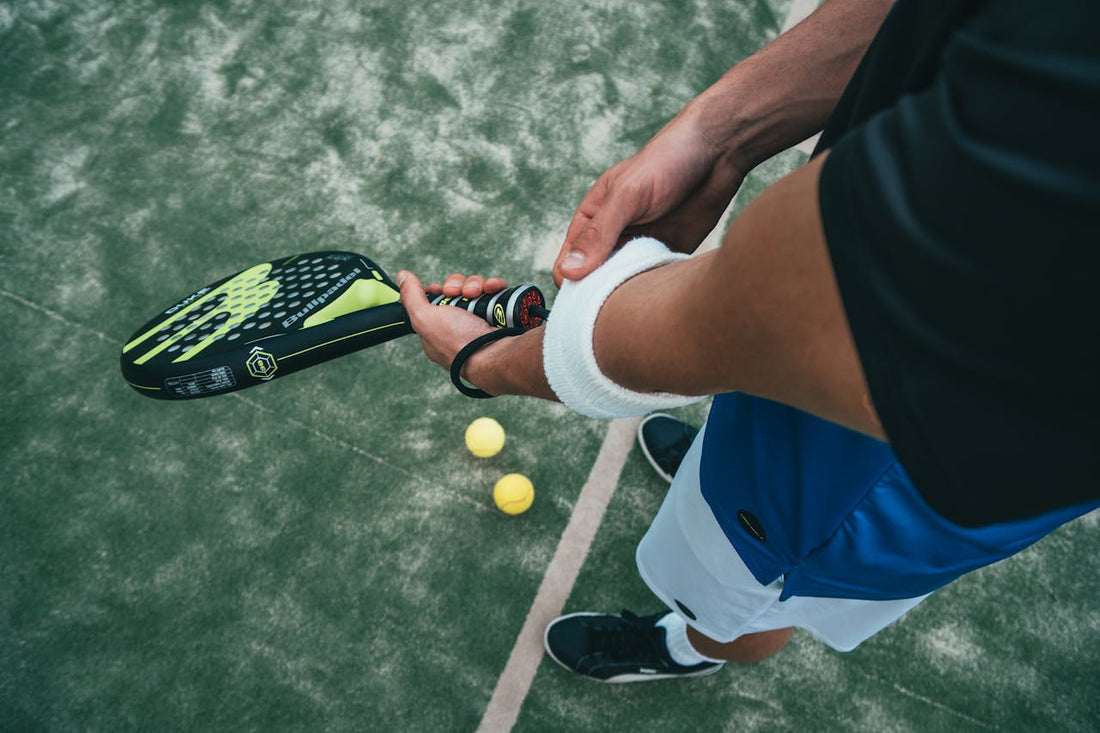Getting into padel for the first time can feel exciting, especially when you’re gripping your very own padel racket in Pakistan and stepping out onto the court. You’ve got the court, the gear, maybe a few friends who’ve been playing longer than you. Now the fun starts. But one of the details that gets missed early on is the grip. It may look small, but the way your hand fits around the handle plays a big part in how your first match feels.
October evenings in Pakistan tend to cool down just enough that evening games are easier to enjoy. With fewer sun breaks and a light breeze, players often stay on court longer. This is when grip comfort really matters. The more you play, the more you’ll notice if something feels off. A good grip doesn’t just help with control. It keeps your hand relaxed, especially during quick rallies or taps at the net.
What Cricket Players Already Know About Grip Control
If you’ve been playing cricket before making the jump to padel, you already understand one thing: how a grip affects your timing. Both cricket bats and padel rackets need that strong, balanced hold to hit cleanly. You know the feeling when your bat shifts mid-swing. That same frustration can happen on the padel court too.
The tricky part is that padel handles feel different. Cricket gear often has flat or slightly oval grips, but padel rackets are rounder and shorter. If you’re used to batting, you’ll notice that your wrist wants to move the same way, but the center of control shifts a bit. Thinking about how you’ve managed grip pressure during batting—whether for long shots or quick singles—gives you an advantage.
One of the habits to carry over from cricket is checking your hold during breaks. Cricketers often re-adjust because they know moisture or tension can change how the bat reacts. That little check-in can make switching to padel smoother.
Testing Your First Padel Racket Feel
Using your first padel racket in Pakistan is about noticing what feels natural, not just what looks right. A grip that gives a flat, stiff feel might be too much on the wrist after a few games. One that’s too soft can lose control during faster points. That’s where testing options makes a difference.
Here in Pakistan, outdoor courts are common, especially in the evenings. But the mix of humidity, dust, and extended rallies can wear down your grip quickly. Players notice slick fingers or sore spots on the palm—small signs that the grip might be wrong for the conditions.
It helps to think of grip comfort in three areas: width, cushioning, and surface feel. Try out different handle sizes or add grip wraps. Some players even combine wraps if they want more shock absorption without increasing the overall width too much. The best grips will keep your strokes clean and your hand relaxed without sliding or pinching.
Some padel rackets in Pakistan feature a moisture-absorbing grip or tacky surface texture, offering more comfort for extended evening matches.
What Pickleball Players Are Learning About Grip Types
Pickleball fans stepping into padel are often surprised by how different the gear feels, even if the court action seems familiar at first. Both sports require fast reflexes and quick wrist movement, but the way you handle the grip changes everything. Pickleball paddles are usually lighter and flatter, with short grips made for fast net play. That doesn’t transfer exactly.
With padel, the ball comes at you with more rebound, and the walls are always in play. That means the force on your wrist can be more sudden and, at times, uneven. Grips that work great for pickleball—thin and tight—might make padel feel slippery or off-balance if not adjusted properly.
One of the best things players can do is focus on how the hand sits around that rounder handle. Instead of wrapping fingers too tightly, the aim should be a firm but relaxed hold. If you’re using overgrips for texture or thickness in pickleball, try the same in padel but pay attention to whether the handle feels too thick or loses feedback on shorter strokes.
Finding the Best Grip Setup for Your Style and Game Type
No two players hold their padel racket exactly the same, and that’s why testing grip setups matters. If you find yourself near the net most of the time, responding to low volleys or tapping balls with short strokes, your grip should help your fingers stay ready and agile. On the other hand, if you like playing off the back wall, looking for that perfect lob or shot return, you might need more cushioning to absorb power.
Outdoor courts in Pakistan tend to see more play at night, and with that comes added dust and sometimes stronger grip wear. Choosing grip wraps that handle these conditions directly, not ones made for indoor-only play, saves some frustration. Sweaty palms or extra dust buildup shouldn’t stop your swing.
A lot of first timers don’t realize how much trial and feel are part of building the perfect grip. Holding your padel racket during a real match is the best test. If your shots feel rushed or your fingers need constant adjusting, that’s worth noting. Some quick ways to fix this include soft cushion wraps, tackier overgrips, or just increasing grip width a little at a time. It doesn’t need to be perfect at first. It just needs to feel right under your hand.
Some high-quality padel racket options in Pakistan include adjustable grip wraps or extra-thick handle bases, making it easier to balance comfort with control.
What Cricket Gear Can Teach You About Long-Term Grip Comfort
There’s something cricket gear can teach every padel player, especially when it comes to hand comfort during long games. Think about batting gloves. They aren’t just about holding the bat; they help reduce shock and keep skin protected during long innings. Padel doesn’t need gloves, but the idea behind it is the same. Long matches require gear that lets your hands stay sharp, not tired or sore.
Cricketers who’ve played across Karachi streets know all about adjusting over a long day. Maybe the sunlight’s harsh, your fingers start sweating, and shots feel off. Using a slightly softer grip wrap or checking the balance during breaks keeps you focused. That habit works in padel too.
Over time, it’s the tiny changes that help most. Slipping on a second wrap, choosing a drier texture, or sitting between matches to stretch your wrist can go further than buying brand new gear. When your racket fits your hand well, you stop thinking about it. When your hands feel good, it’s a lot easier to keep your energy up match after match.
Play Longer, Swing Better With the Right Grip
One of the fastest ways to enjoy your first match is by picking a grip that supports your shots from the start. If you’re switching from cricket or pickleball, you already have a feel for pressure control and wrist form. That makes grip choice a bit easier. You’re not starting fresh, you’re just making new decisions based on familiar movement.
Good grip fit keeps your swing tighter, your hand calmer, and your rallies longer. The right grip takes one worry off your mind and lets your full attention go to the ball. Once that piece falls into place, every shot, drop, and smash starts feeling more fun. And in the late evening cool of an outdoor court in Pakistan, that’s exactly the kind of game you want to play.
Ready for padel in Pakistan? Starting with the right racket can shape how you move, swing, and stay confident through every point. Whether you're focusing on control up front or power from deep, a grip that fits your hand makes all the difference. We’ve built our lineup to support both beginners and experienced players, with balance and feel that work under local court conditions. See which padel racket in Pakistan feels right for your game, and if you're unsure where to begin, our team at Tornado Sports Company is always here to help.

